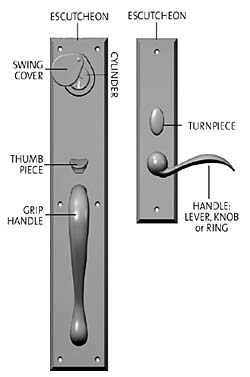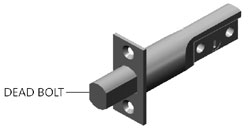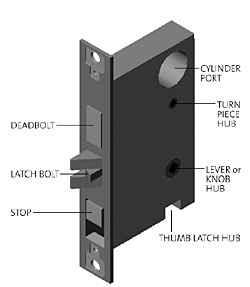Selecting High-End Hardware for Residential, Commercial, and Hospitality Locations
Structural interlayers add protection against hurricane and blast forces
This course is no longer active
Advertorial course provided by Rocky Mountain Hardware
|
ESCUTCHEON
Back plate that attaches to the door.
HANDLE
The portion of the set you grab to pull or rotate. The handle
options are grips, levers, knobs or ring pulls.
SWING COVER
The flap that covers the cylinder or the emergency release
access.
THUMB PIECE
This piece retracts the latch bolt on a thumb latch entry
lock set.
TURN PIECE
This piece operates the dead bolt on the interior side of
a locking set.
LOCK MECHANISMS are the portion of the set operated by the handles, cylinders, thumb latches and turn pieces:
|
|
|
Originally published in Architectural Record.
Originally published in December 2005













